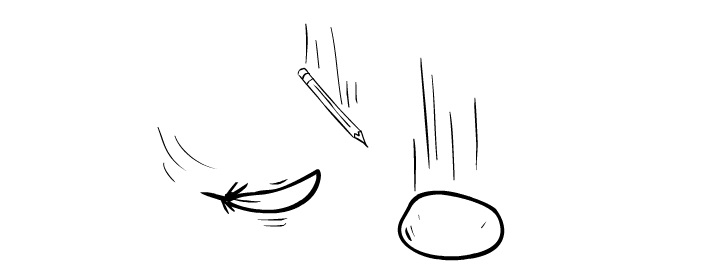Judith Bal, Meie van Laar – NEMO Science Museum
Heavier objects fall faster than lighter objects, this is a common misconception at secondary schools in the Netherlands, was the starting point for a new activity we developed
Designing a hands-on activity
After researching the subject we found out that a multidisciplinary approach to the topic would work the best to explain the concept. Furthermore, we wanted the activity to be hands on and inquiry based. Therefore we asked the students to design their own experiments to find out what influences the falling, rolling and gliding speed of an object.
Testing the activity
In July 2016 we piloted the activity with 55 students of pre-vocational secondary education (VMBO). We were very curious how the students would respond to the materials and the open design of the activities. Especially because in the Netherlands this type of students are not used to do open designed activities at school.
Piloting in small groups
Our objective with this activity was to beat the misconception. To understand if we could meet our objective with this activity we tested each activity in small groups of 15 students. This was a very successful way of working with the subject. In this setting we were able to really guide the students during their research. There was enough time to walk around and help every student with their set-up for a good research(question). We spoke with them about what they are doing, which gave them enough new ideas and realization.
What worked well
- It was good to see how the students experiment with the materials and it gave us lots of insights on how we needed to further develop the activity.
- We start and end the lesson with an activity where the students talk about their ideas. In this way you can compare and use the answers of the students during the introduction, the experimenting and at the end of the lessons use their answers to draw conclusions on falling.
What we need to improve
- After the tests with the students we had to fine tune the materials, to make all the experiments work. We looked for suitable material and came to the following experiments.
3D printed materials
We are excited to have the possibility to work with IBIMET in designing 3D printed materials for our rolling experiment. We asked them to design a cylinder with which you can transport weight on different places in the cylinder. For example you can put the same amount of weight in the center of a cylinder and on the outside of another cylinder and compare what happens.. This will give the students even more opportunities to explore the subject. We are looking forward to see if it enhances the learning of the students.

